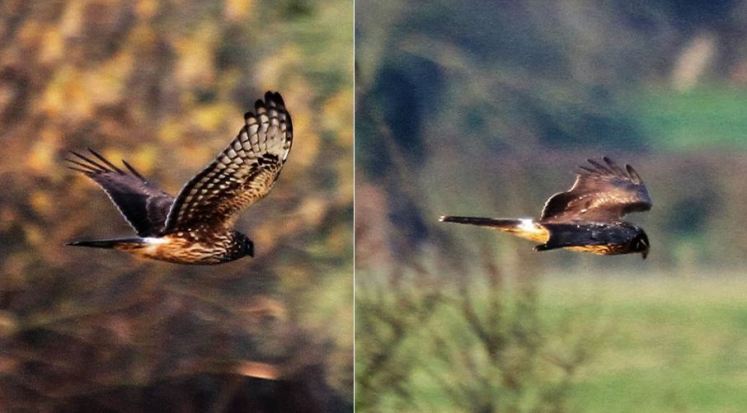The first and last days of the week were crisp, dry and sunny but the intervening period saw a low pressure system move rapidly across southern England, bringing wet and windy weather to Northants on 20th/21st, after which it was mainly dull, cold and showery. Few new birds were discovered in the seven-day period but there was still plenty to focus on, although the expected Waxwing invasion failed to materialise.
Up to twenty-five Pintails remained at Pitsford Res, where single male and female Red-crested Pochard x Mallard hybrids were found on 23rd and two drake Red-crested Pochards constituted a poor showing following regular double-figure counts there in previous weeks. Up to two female Scaup were at Stanford Res until at least 20th, with one remaining until 25th, and four of the original five remained at Pitsford Res until at least 23rd.
Six localities produced Great White Egrets this week with four regularly on view north of the causeway at Pitsford Res. This species was also recorded from Thrapston GP on 19th, Summer Leys LNR, where one was present on the same date, after which it or another was seen at nearby Ditchford GP on 20th and the long-staying individual remained at Ravensthorpe Res, visiting Hollowell Res on 24th.

The Slavonian Grebe found last week at Thrapston GP remained on Titchmarsh LNR, visible from the North Hide, until at least 19th.
In the vicinity of Stanford Res, the ‘ringtail’ Hen Harrier continued to be seen regularly – if only fleetingly – throughout the week and was aged and sexed as a juvenile male from photographs taken on 23rd. Additionally, two more ‘ringtails’ were seen – one at Stanwick GP on 21st and the other the following day at Harrington AF.

Aside from a Merlin again at Stanford Res on 25th, Peregrines recorded from Ditchford GP, Harrington AF, Northampton and Pitsford Res constituted the only other raptor of note during the period.
Just two localities produced Golden Plovers this week, but the lack of sites was more than made up for in numbers with one thousand five hundred counted near Grafton Regis on 23rd. On 20th, three Black-tailed Godwits appeared at Pitsford Res, two Dunlins visited Stanwick GP on 24th, where four Redshanks were also present on the same date, while one continued to linger at Pitsford Res until at least 23rd.

Two Green Sandpipers were also at Pitsford on this date with two more at Stanford Res and one at Ditchford GP on 20th. Single Common Snipe were at Ditchford GP on 20th and Grafton Regis on 25th but twenty-seven were counted at Pitsford on 23rd.
Pitsford also produced a second-winter Little Gull in the roost on 21st, while the usual adult Yellow-legged Gull remained there until at least 23rd. This week saw some new Short-eared Owls with one near Neville’s Lodge, Finedon on 22nd and 24th and two there on 23rd, while one was again in the Blueberry Farm (Maidwell)/Brampton Valley area on 24th-25th. Two Bearded Tits were again reported at Summer Leys LNR on 20th and the male Stanwick GP’s A45 Lay-by Pit, remained until at least 21st, while reports of Central European Blackcaps increased this week with singles at Summer Leys on 20th, Duston (Northampton), Kettering and Pitsford Res on 23rd and two near Kettering on 25th.

Not increasing – much to the disappointment of many – were Waxwings which, after last week’s sprinkling of sightings of birds on the move, the much-anticipated local invasion simply did not happen but the flyover individual at Brackmills (Northampton) on 24th provided some consolation for one observer at least. Blueberry Farm/Brampton Valley and several, heard only, in Brixworth. Stonechat numbers were down in comparison to previous weeks with one at Pitsford Res on 23rd and up to four in the Blueberry Farm/Brampton Valley area all week, with Bramblings at the same locality on 19th.







 The latest, limited edition, Northamptonshire Bird Report, with records for 2015, is now available. Contents include full Systematic List compiled using records from more than 320 observers, sections on Escapes and Ferals and Hybrids, as well as many photos and illustrations by local photographers and artists.
The latest, limited edition, Northamptonshire Bird Report, with records for 2015, is now available. Contents include full Systematic List compiled using records from more than 320 observers, sections on Escapes and Ferals and Hybrids, as well as many photos and illustrations by local photographers and artists.












